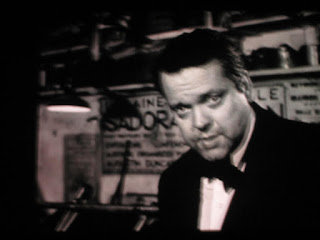Cook's women are a bundle of contradictions. On the one hand they're kind of uneducated and unexciting, and on the other hand they're immensely good-hearted and somehow imbued with the character that's been the spine of British culture for centuries.
Her earlier period is my favorite. Cook painted traditional women who are colliding with modern times.
No matter how many new ways they adapt there always seem to be more that they're expected to catch up to.
Cook managed to capture the kind of cozy, sentimental life that lots of older Britains have evolved.
Her housewives always have lots of friends. Nobody in her pictures suffers from loneliness.
Haw! She's famous for her "Ladies Night Out" pictures.
Cook is sometimes compared to Donald McGill (that's his work, above), the prolific creator of British seaside postcards in the 40s. About McGill, George Orwell wrote (click to enlarge):
There are obvious differences between Cook and McGill but there are similarities, too. Both had an obvious affection for their subjects and both saw themselves as popular entertainers in the music hall tradition.
BTW: I like what Orwell said about Shakespeare injecting that kind of music hall comedy into tragedies. It's a combination that works.
The painter's very skilled but he's not as cartoony as Cook, and cartoons are a more efficient way of handling themes like this.
The second is by Cecil Bell, one of my favorite New York City painters. If Cook had handled a similar theme, with women on board a ferry on a windy day, she would surely have had one of the women face the wind like this (below).
That's because Cook was a cartoonist at heart. She wouldn't have been able to help herself.














































